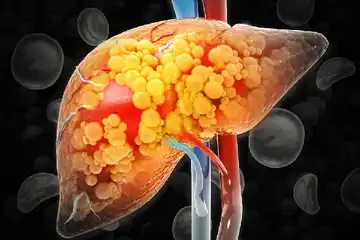What is bartonellosis?
Bartonellosis refers to a group of bacterial infections caused by Bartonella species. Globally, it is reported in 6.4 cases per 1,00,000 populations in adults and 9.4 cases per 1,00,000 populations in children in the age group of 5-9 years. It affects all age groups, but most frequently those <21 years of age.
What are its main signs and symptoms?
It is a self-limiting disease and is characterised by swelling of lymph nodes, followed by fever or tiredness. Symptoms may not always be seen. A person with compromised immunity has higher chances of contracting the infection.
Cat scratch disease:
- Symptoms may not appear for days or weeks.
- A red spot may be visible on the skin at the infection site and may become raised a few days after exposure.
- A painless, non-itchy papule forms, which may go unnoticed or be attributed to injury.
- Other symptoms include muscle ache, malaise, fatigue and headache.
- Less often, sore throat, loss of appetite and weight loss may be seen.
If you are tired of dieting and exercising and are not able to lose weight, then use myUpchar Ayurveda Medarodh Fat Burner Capsule, it has no side effects, order it today and avail the benefits.
Carrion’s disease:
- This disease has two stages: sudden acute phase (Oroya fever) and chronic, benign phase (verruga peruana).
- Oroya fever presents with sudden onset of fever, chills, weakness, severe headache, profuse sweating and pale skin.
- Verruga peruana occurs in untreated individuals. Small reddish-purple lesions appear on the skin and later become nodular. They may bleed, form ulcers or become blisters.
Trench fever:
- Symptoms may be seen a few days or even up to 5 weeks after exposure.
- Sudden fever, headache, dizziness, chills, weakness and pain to the legs and back may be seen.
- Temporary skin rash and enlargement of spleen or liver may be seen.
What are its main causes?
Bartonellosis is caused by an infection from a microbe of the Bartonella species.
Cat scratch disease is caused by Bartonella henselae.
- It mainly occurs by the lick, scratch or bite of cats.
- The transmission to humans is by cat fleas.
- Kittens are more likely to spread the infection than full grown cats which are generally asymptomatic.
Carrion’s disease is caused by Bartonella bacilliformis.
- The bacterium is transmitted via the bite of sand fly and attaches to the surface of the red blood cells in the bloodstream.
- Its mechanism is similar to that of malarial infection, and it leads to haemolytic anaemia.
Trench fever is caused by Bartonella quintana.
- The bacterium is transmitted by human body louse.
How is it diagnosed and treated?
A preliminary diagnosis can be made based on the history of exposure and typical signs and symptoms. Diagnostic tests include:
- Bacterial serology test is confirmatory, typically immunofluorescent antibody (IFA) test for IgM and IgG antibodies.
- Polymerase chain reaction (PCR) may be used to test for Bartonella infection. It can be confirmed by DNA sequencing.
- Western blot test has also shown good specificity.
- A culture test is possible, but the bacteria take time to grow in the laboratory setting and are insensitive in standard medium.
Treatment methods:
- Antibiotics are the main line of treatment for complicated cases.
- Cat scratch disease resolves on its own. Pain relieving medication may be given, and local heat may be applied to the skin overlying the involved lymph nodes.
- Complications such as encephalitis in cat scratch disease generally show complete spontaneous recovery.
Prevention and self-care tips:
- Avoid getting scratched by stray cats. Keep pet cats indoors.
- Wash hands properly after handling cats.
- Wear clothes with long sleeves.
- Use repellents for fleas and lice.
















